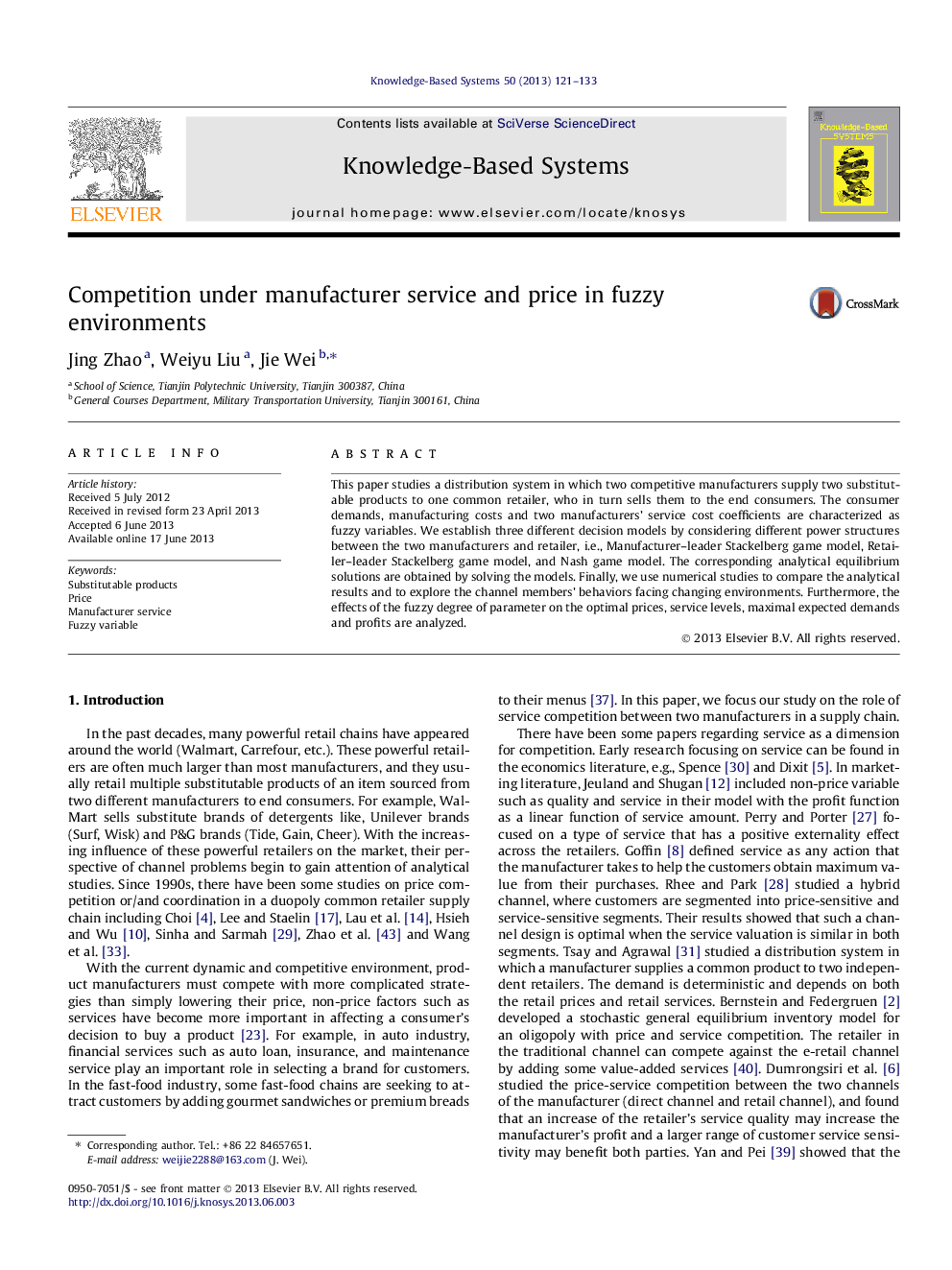| Article ID | Journal | Published Year | Pages | File Type |
|---|---|---|---|---|
| 6862791 | Knowledge-Based Systems | 2013 | 13 Pages |
Abstract
This paper studies a distribution system in which two competitive manufacturers supply two substitutable products to one common retailer, who in turn sells them to the end consumers. The consumer demands, manufacturing costs and two manufacturers' service cost coefficients are characterized as fuzzy variables. We establish three different decision models by considering different power structures between the two manufacturers and retailer, i.e., Manufacturer-leader Stackelberg game model, Retailer-leader Stackelberg game model, and Nash game model. The corresponding analytical equilibrium solutions are obtained by solving the models. Finally, we use numerical studies to compare the analytical results and to explore the channel members' behaviors facing changing environments. Furthermore, the effects of the fuzzy degree of parameter on the optimal prices, service levels, maximal expected demands and profits are analyzed.
Related Topics
Physical Sciences and Engineering
Computer Science
Artificial Intelligence
Authors
Jing Zhao, Weiyu Liu, Jie Wei,
